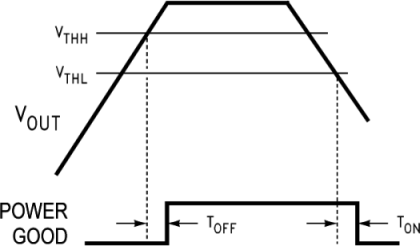SNVS161E October 2001 – October 2015 LP3988
PRODUCTION DATA.
- 1 Features
- 2 Applications
- 3 Description
- 4 Revision History
- 5 Pin Configuration and Functions
- 6 Specifications
- 7 Parameter Measurement Information
- 8 Detailed Description
- 9 Application and Implementation
- 10Power Supply Recommendations
- 11Layout
- 12Device and Documentation Support
- 13Mechanical, Packaging, and Orderable Information
Package Options
Mechanical Data (Package|Pins)
Thermal pad, mechanical data (Package|Pins)
Orderable Information
7 Parameter Measurement Information
 Figure 9. Power Good Flag Timing
Figure 9. Power Good Flag Timing
 Figure 10. Line Transient Response Input Perturbation
Figure 10. Line Transient Response Input Perturbation
 Figure 11. PSRR Input Perturbation
Figure 11. PSRR Input Perturbation